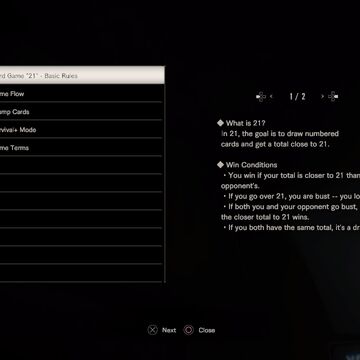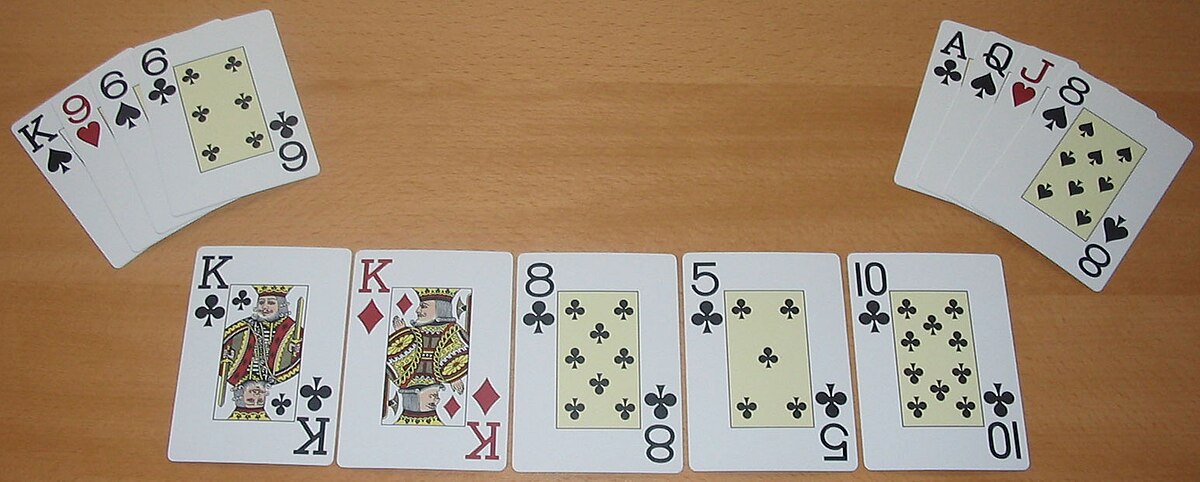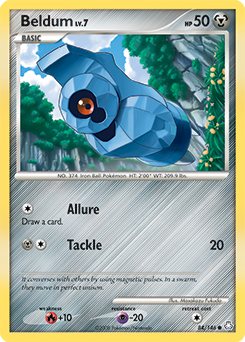7 Card Draw Rules
- How To Play 7 Card Draw
- 7 Card Draw Poker Rules
- What Are The Rules To 5 Card Draw
- 7 Card Draw Poker Rules
Not to be confused with Seven Card Stud, Seven Card Draw is a poker variant that closely resembles Five Card Draw. The only difference is that each player is dealt seven cards rather than five cards.
- Everyone picks up their seven cards from the table. The person to the left of the dealer begins the game. She must take one card from either the pile of remaining cards or the card that is face up. It is advised to only take a face up card if you feel that you can use it to create a combination with the cards in your hand.
- Deuce to Seven Triple Draw is a 5 card draw low game. Each player is dealt 5 cards and the goal is to make the lowest possible 5 card hand. There are four rounds of betting and three draws in this game. After each round of betting players choose cards to discard, anywhere from 0 to 5, and the dealer deals them replacement cards.
Seven Card Draw is a relatively obscure variation but it’s still occasionally found in home games. Seven Card Draw was designed to address one of the biggest complaints players have of Five Card Draw: the game doesn’t have enough big hands.
In Seven Card Draw, the players may choose any five of their seven cards to create the best five card hand possible. In this version of draw poker, you’ll see strong hands more often and generate more betting action.
Antes and Blinds
Set the initial stakes. 7 Card Stud is usually a fixed limit game, meaning that you are only allowed to raise by a limited amount in each betting round. Agree on an initial “small bet” and “big bet” with your fellow players. For instance, you might set limits of $2/$4, or $10/$20. Each active player receives three more face up cards and one more face down card, with a betting interval after each round of cards dealt. In the showdown, each player turns up all of their hole cards and selects five of their seven cards as their hand. The player must separate these cards from the other two, which they discard.
Seven Card Draw can either be played with antes or blinds. In the ante system, each player must place a small bet at the beginning of every hand. This bet is usually equal in size to 10% of the small betting limit. In a $10/$20 game, the antes would be $1.00.
Other times, players can use the same blind system that Texas Hold'em uses. In the blinds system, the player to the left of the dealer posts the small blind, which is equal in size to half the minimum bet. The player to the left of the small blind posts the big blind, which is equal in size to one minimum bet.
In a $10/$20 game, the small blind would be $5 and the big blind would be $10.
Dealer
If a full time dealer is used in the game, a small button is used to represent the dealer’s position at the table. The dealer’s button moves one seat to the left at the beginning of each hand. The purpose of this is to denote position and to ensure each player pays the blinds once per orbit.

At the beginning of each hand, the dealer deals the cards face down, one at a time, beginning with the player to the left of the dealer and going clockwise around the table until each player has seven cards.
First Betting Round
After all the cards have been dealt, the players now have a round of betting. This round begins with the player to the immediate left of the dealer. This player may call, fold, or raise. All bets in this betting round are placed in increments of the low betting limit. In a $10/$20 game, each bet and raise would be placed in increments of $10.
The action then continues clockwise around the table with each player having the same choices. If any player raises, the other players must at least match that raise to stay in the hand. The action continues clockwise until all the bets have been matched.
Draw
After the first betting round, the players may now discard up to four cards and receive new cards in exchange. Players may also “stand pat” and not draw any cards if they so choose.
How To Play 7 Card Draw
Second Betting Round
The second betting round begins with the first remaining player to the left of the dealer. This time all bets are placed in increments of the high betting limit. In a $10/$20 game, all bets would now be placed in $20 increments.
The first player may bet, check, or fold and then the betting continues clockwise around the table. Once again, if any player bets or raises, each of the other players must either match that amount or fold their hands.
Showdown

7 Card Draw Poker Rules
Any players remaining after the last betting round now show their hands. The player with the best five card poker hand, using any combination of the seven cards in his hand, wins the pot. If there is only one player left after the last betting round, that player may take the pot without showing his hand.
THE DECK |
| 4 Aces (different suits) | 10 points |
| 4 Kings (different suits) | 8 points |
| 4 Queens (different suits) | 6 points |
| 4 Jacks (different suits) | 4 points |
| King & Queen (trump) | 4 points |
| King & Queen (same suit, not trump) | 2 points |
| A, 10, K, Q, J of trump ('a run') | 15 points |
| 9 of trump | 1 point |
| J Diamonds & Q Spades ('pinochle') | 4 points |
| Both J Diamonds & both Q Spades ('double pinochle') | 30 points |
The 15 point run of trump includes the marriage within the run. The same card can be counted more than once for different types of meld, but not for the same type. For example, a single Q of spades can be counted in both a pinochle with the J of diamonds, and again in a marriage with the K of spades, but the same single Q of spades cannot be counted twice in two marriages with 2 K's of spades, since marriages are of the same type of meld.
For a player to keep his meld, he must take at least 1 point during trick taking. The exception to this rule is the 9's of trump. A player does not lose any points gained in counting 9's in meld, even if he does not make his bid at the end of the hand. Thus 9's of trump should be marked down separately on the score sheet from the rest of the meld.
TAKING TRICKS OR PLAYING OUT THE HAND
The winner of the bid plays the first card. He can lead any card he likes except trump, unless trump is all he has in his hand. Trump must not be led until it is 'broken'. The next player to the left then plays 1 card. Then the next player to the left plays 1 card, and so on, until each player has played a card, and the 'round' is complete. Each player must follow the suit led, and must beat the card(s) that have been played previously in the round if possible. If he cannot follow suit, then he must play trump. At this point, trump is 'broken'. If he cannot follow suit nor play trump, then he can play any card he desires. He must always try and take the trick if possible. In other words, he must play a higher card in the suit that has been led and have been played, or if a player cannot follow suit, and trump has already been played, then he must try to beat the trump. However, a player must always play the suit that was led, if he has it, even if a previous player has played trump. The 'round' ends when each player has played 1 card. The 'trick' is taken by the player who first played the highest ranking card of the suit that has been led, or if trump has been played, the highest trump that was played first takes the trick. The player who takes the 'trick' then leads in the next 'round'.
To clarify the above paragraph here's an example. Let's say there are 4 players, and the winning bidder has declared diamonds as trump for this hand. Trump has not been broken yet, so player 1 who has the lead in this round plays a 10 of clubs. Going clockwise, it is player 2's turn. Player 2 has a Q and A of clubs. Player 2 has to play his A of clubs, since he must try and take the trick. Player 3 does not have clubs, so he has to play trump, if he has any. Player 3 plays a K of diamonds. It is now player 4's turn. If player 4 has clubs, he must follow the suit that was led and play clubs. He can play any club he wants at this point, since the trump played by player 3 will take the trick, therefore player 4 can't beat it. If player 4 has no clubs, then he must play trump. If he can beat player 3's K of diamonds, he must do so. If player 4 has neither clubs nor diamonds, he can play any card he wants. In this example, player 4 does not have clubs, and only has one trump, the other K of diamonds, so he has to play it. Since player 3 played the first K of diamonds, he wins the round and takes the trick. Player 3 then leads the next round. Player 3 can lead with trump if he desires, because trump has now been broken.
 When the rounds end or all cards have been played out, then each player counts his points taken. Only A's, 10's, and K's count as 1 point each. Q's, J's, and 9's have no value when counting up the points from taking tricks. The player who takes the 'last trick' also receives 1 additional point. The game then continues with the dealing of the next new hand.
When the rounds end or all cards have been played out, then each player counts his points taken. Only A's, 10's, and K's count as 1 point each. Q's, J's, and 9's have no value when counting up the points from taking tricks. The player who takes the 'last trick' also receives 1 additional point. The game then continues with the dealing of the next new hand.ENDING OF THE GAME
The game ends when a player reaches 50 or more points at the end of a hand. If more than 1 player reaches 50 or more points, and 1 of those players was the winning bidder, then the game goes to the winning bidder of that hand, no matter if the other player's) have more points. This can make bidding quite aggressive near the end of the game. If none of the players with 50 or more points were the winning bidder, then the game goes to the player with the highest points. If there is a tie, then the game continues on only with the tying players until there is a winner.
THE RENEGE
If a player reneges, by drawing a different amount of cards than he discarded, or by not following the rules for taking tricks, then he has reneged, and ruined the hand. For example, if a player does not beat a card that has been played in a round when he could have, or played trump when he didn't have to, etc, he has reneged. At this point the hand is over. The player who caused the renege loses all points for that hand, including all his meld (9's of trump too), and goes back whatever the bid was for that hand. All other players get to keep their meld, but not any points taken during the taking of tricks.
Rules of Bruce's 5 Card Pinochle and 7 Card Pinochle written by
Curtis Lee Hall.
 This article is dedicated to the memory of
This article is dedicated to the memory of